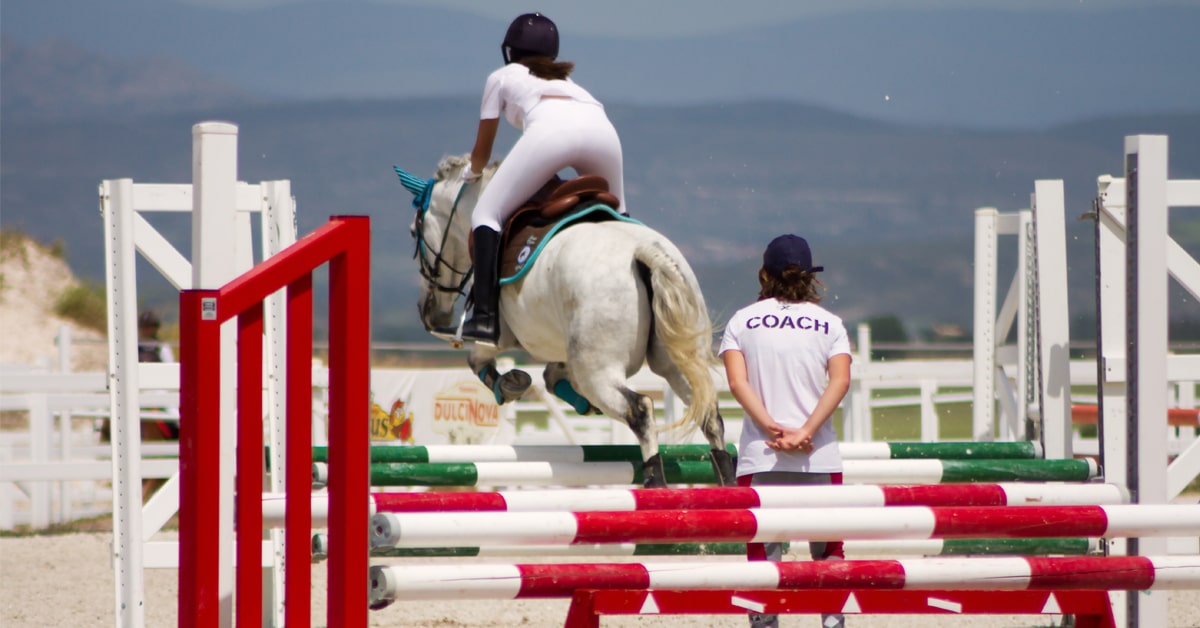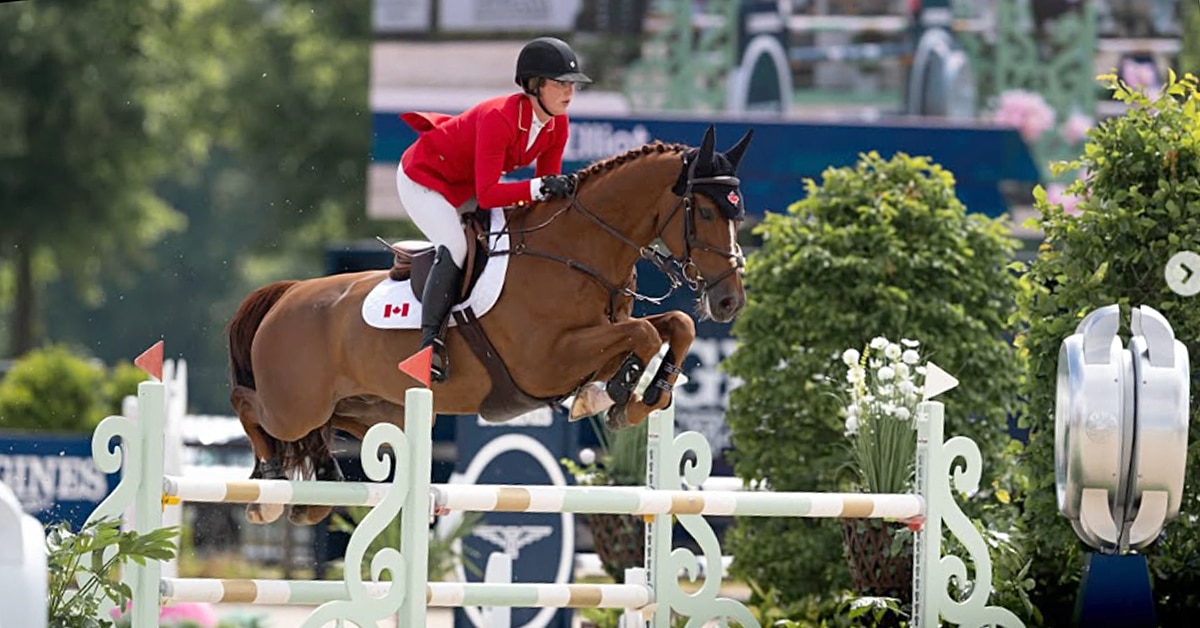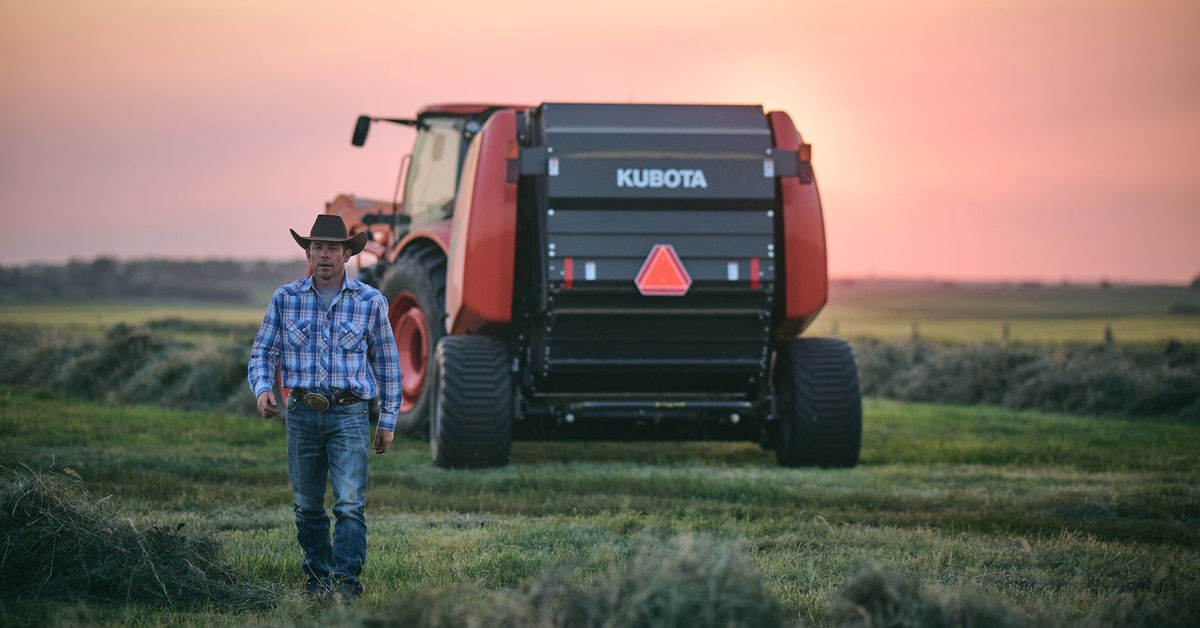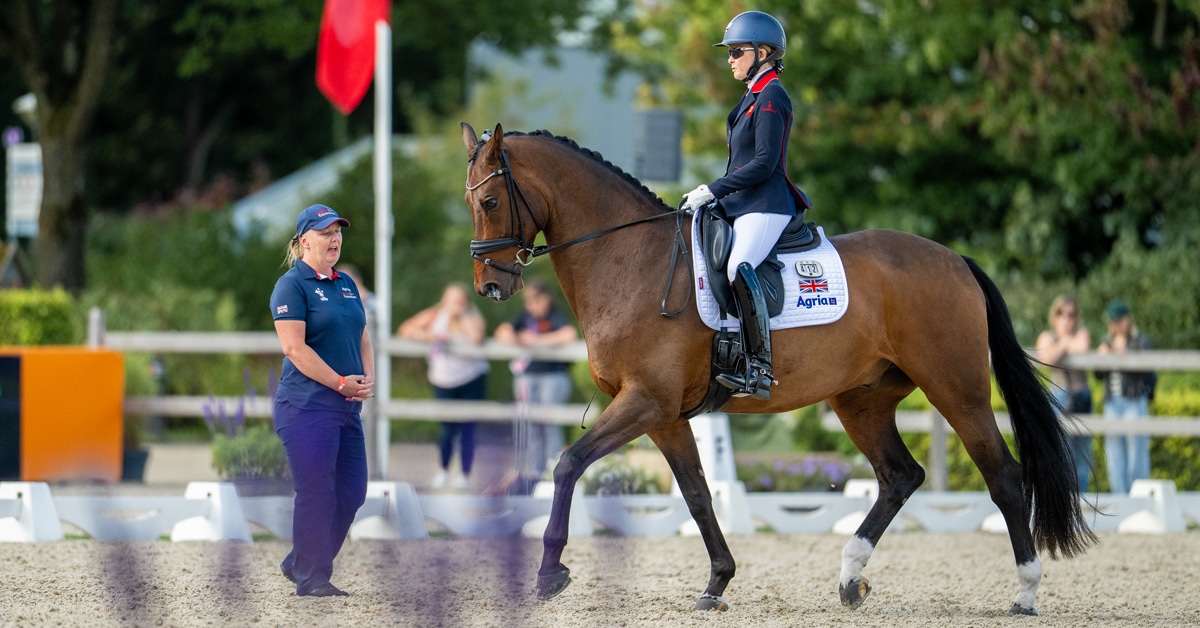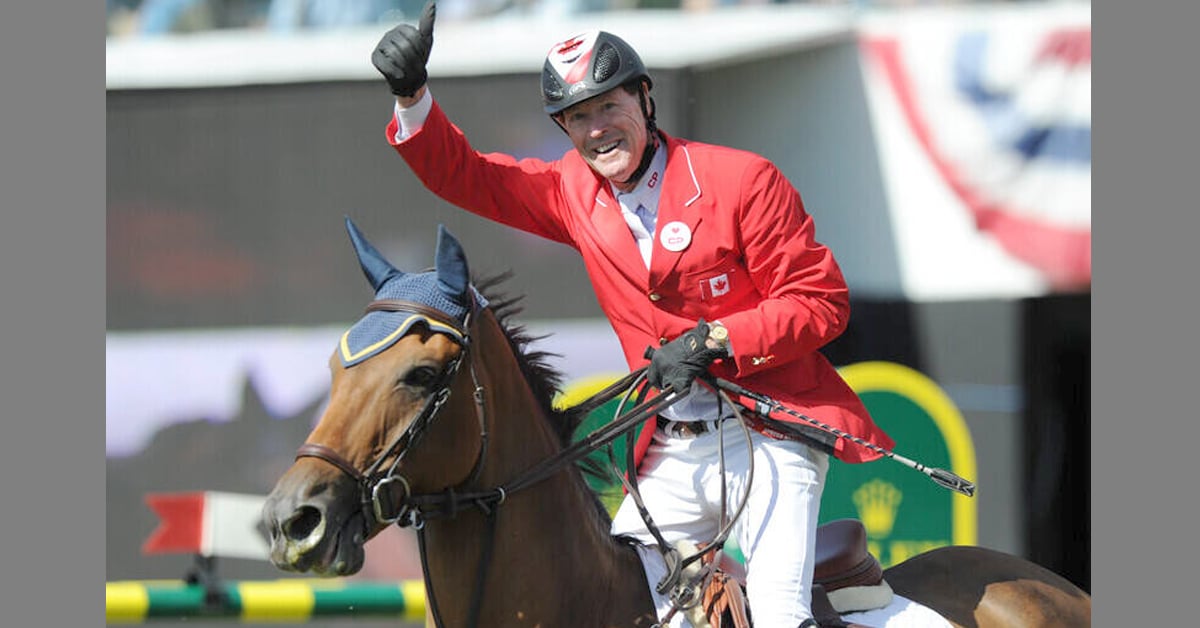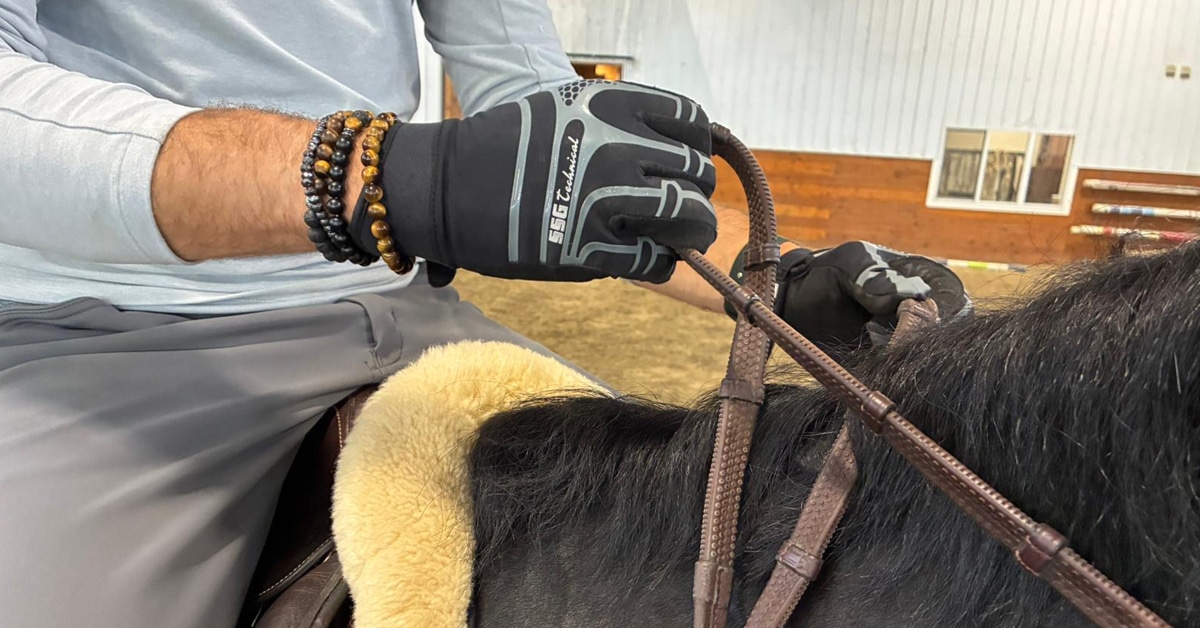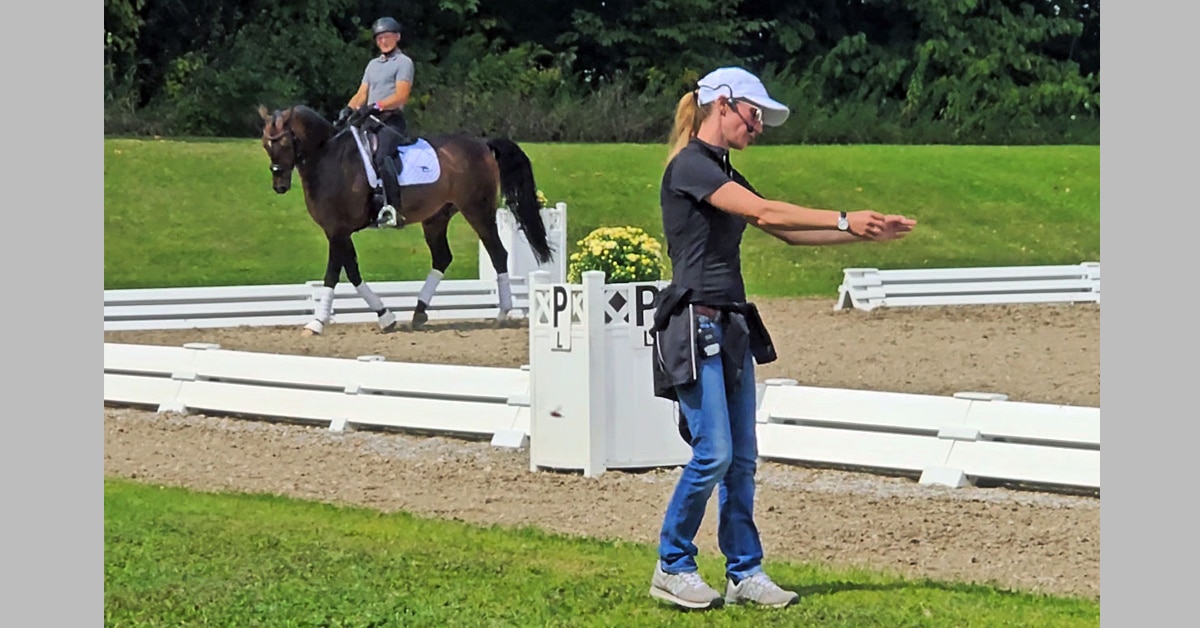Its presence in dressage tests spans from second level where it is introduced, all the way to intermediaire I. As commonly used in daily training as it is, the shoulder-in is a notoriously difficult movement in which to achieve a high mark.
“I learned something very interesting from an “O” judge at a symposium,” says David Marcus. “Shoulder-in first has to be about rhythm and angle.” This judge said to me, “if you can show a beautiful angle, meaning perfectly on three tracks from beginning to end, and in perfect rhythm with a perfect frame, I will give you an eight, even if there is no bend. If you can add bend to that without compromising any of the other things, I’ll go to nine.” Marcus distinguishes between training the shoulder-in as preparation for competition and using it to improve other movements, but both approaches should have the same goal: the correct development of the horse and rider.
Controlling the Variables
“When I am schooling the shoulder-in to prepare for the show ring, what is of the greatest importance is the ability to control each variable separately. I want to be able to control the angle, positioning, and balance before the bend, which is the last thing I add. One of the most difficult qualities to achieve in the shoulder-in is the ability to remain on three tracks – with the inside hind leg on the same track as the outside front leg.
When I am schooling the shoulder-in, I always have an eye on the ground, or a mirror, or I have someone video the ride. At least the video will show me whether what I thought felt amazing was actually correct. I watch the video immediately after the ride so that I can go out and correct it, ensuring that the mistake never lasts more than a day.
In all my training I look for simplicity. I will frequently ask myself, is this simple, or is it becoming very difficult? In the shoulder-in, some things can be fixed so simply just by controlling one of the variables: speed, angle, or bend.
A common problem when a rider starts to perform the shoulder-in is to have too much angle. When the horse offers too much angle, it invariably slows down at the same time. It’s important that the horse always stay in front of the aids – to have the desire to go forward on its own – so when I’m on a horse that wants to be in too much angle, that’s when I will add the feeling of the extended trot. I would not use too strong a leg aid, but instead use my seat and a pushing leg (rather than a kick) to add the feeling of extended trot within the shoulder-in.
As I create more energy in the trot, the angle of the shoulder-in will naturally soften. The correction comes from controlling the speed, rather than the angle. Trying to correct the angle makes you ride more with your reins and think front to back. If you add just a bit of energy, the energy is going to reduce the degree of angle while the horse is still working forward from back to front.
If controlling the speed addresses the problem with too much angle, controlling the angle is a simple solution to the horse that wants to run through the shoulder-in. If the horse I am riding wants to run through the aids, rather than using the rein in a backwards direction in an attempt to slow him down, I will simply ask for more angle. Increasing the angle makes the horse carry more weight on his hind leg, which brings better balance and better quality to the collection, which is the ultimate goal.
A common mistake riders make in the shoulder-in is to allow the haunches to swing out, resulting in the horse not being on three tracks, with the quarters falling out toward the wall. Shoulder-in should always have the feeling of haunches-in within it. The hind legs should be tracking straight down the long side, and only the bend in the ribs and inside position of the front legs creates the shoulder-in. Many riders forget that shoulder-in requires control of the outside of the horse’s body; the outside hand has to stay low and connected, while the outside leg stays on enough to close the door so that the outside hind leg can’t swing out.
Because of the tendency for the horse’s quarters to swing out in the shoulder-in, I typically school the shoulder-in away from the track – on the centre line or quarter lines – only after the horse has learned the haunches-in. That exercise teaches the horse to respect the outside aids, and teaches the rider how to control the outside of the horse’s body.
Circle – both test and correction
One of the exercises I most commonly use when schooling is ten-metre circles, especially with horses or riders who are struggling with maintaining inside bend. If I’m having a hard time with the shoulder-in, rather than continuing to try and improve the shoulder-in I will take a step back and figure out where the hole is that is causing the problem. To me, the natural step back is to the ten-metre circle. Before I continue with the shoulder-in, I ride a ten-metre circle and ask myself if it’s a correct circle with the correct bend and rhythm. The circle will show me where the problem lies.
I also combine circles with shoulder-in, both to improve the shoulder-in and to test it. Coming out of the corner, I will ride shoulder-in for a few steps, then a ten-metre circle. As I finish the ten-metre circle I go directly into shoulder-in again; I may then add a second circle on the same long side.
People are sometimes afraid to ride shoulder-in on the wall for fear that the horse is relying on it. But if you know you can go onto a circle at any point without having to fight with the outside aids, then you know the horse is not using the wall. If you can think about riding a circle and then be on a circle in the next moment, you know your horse is not using the wall.
Another exercise I find valuable is to include the idea of the circle, but not actually ride it. I will come out of the corner onto the long side and ride a few steps of shoulder-in, carrying the bend from the turn into the shoulder-in. If the horse begins to feel stiff, I will start to ride a circle. Just the aids to initiate the circle with inside bend may be enough of a correction, and I might feel that I don’t need to ride the circle after the first couple of steps.
What I do next is apply my leg yield aids while maintaining inside bend, to push the horse back to the wall. I then continue on the long side again in shoulder-in. One benefit of this exercise is that it teaches the horse a correction. A common mistake in shoulder-in is that the horse begins to fall off the track toward the centre line. By riding two steps of a circle and then leg yielding back to the track into shoulder-in, I am, in a way, giving the horse an opportunity to make a mistake. I think those opportunities are an important part of the training, because that is how the horse learns the correction.
Linking shoulder in with half-pass
If the ten-metre circle is the step back from shoulder-in, then shoulder-in is the step back from half-pass. I use shoulder-in frequently to improve the half-pass in the same way I use the ten-metre circle to improve the shoulder-in.
I will begin a half-pass left, for example, by turning onto centre line at A and riding half-pass toward the quarter line line. As soon as the horse feels not quite right in the bend, balance or suppleness, I will stop the half-pass and ride left shoulder-in until I am happy with the quality. If there is room on the long side I will then continue in the left half-pass.
In the beginning I might bring in the shoulder-in after three steps of half-pass, and then as the horse improves, the goal is to lengthen the gap and do the shoulder-in only after five steps. If I am correctly using the shoulder-in to improve the quality of the half-pass, the gap between each half-pass and each segment of shoulder-in should become longer and longer until I can ride a full half-pass all the way across the ring and maintain the same quality in the last step that I had in the first.
Whether you are schooling this movement for the show ring or using it to improve another movement, always remember that if it isn’t working, don’t keep drilling it. Instead, go to the exercise that comes before it in the horse’s training, identify where the problem is, and correct it before returning to the more advanced exercise.
The Latest
